Text
Final Index
14. QCQ #3: The Gravity of Levity
15. Contradictory Structures: Research
16. Contradictory Structures: Final
17. QCQ #4: X Marks the Spot
18. Lost Statements: Research
19. Self-Directed Manifesto: Final
1 note
·
View note
Text
Bodily Studies: Finding Balance in the Body April 2025 Duration 2min
For this piece, I wanted to explore how I could use my body like a balance, similar to those vintage scales. I was curious about finding a position where my body could express both pain and elevation at the same time. It's about the struggle to hold myself in a way that feels equal parts heavy and light. I was interested in how the body can convey both tension and release, how it can carry weight but still reach for something higher. I wanted to capture that balance between vulnerability and strength, showing how the body can be both fragile and resilient.
1 note
·
View note
Text



Lost Statements: Research Concept Board
Making molds of broken shards of glass and small glass miscellaneous items to fill a long box.
1 note
·
View note
Text
QCQ #4: X Marks the Spot

Quote: “Nauman’s attack, far more deadly than anti-form—because it is about a cooling from which nothing will be able to extricate itself… is an attack made in the very name of death, or to use another term, entropy.”
Comment: This description of Nauman’s work feels eerie, in a powerful way. Instead of breaking things apart like anti-form artists does, he aims to freeze the space itself, making it unrecognizable and inert. It's something I was sitting with as my work this semester has entailed a lot of actual destruction, chaos, and damaging. There’s something so interesting about the idea that even meaning can be “cooled” into a stillness, something beyond interpretation. Like this he’s emulating the absence as well as death. This makes me reevaluate my views on minimalism and the aesthetics it plays in contemporary art. Because with what I read it feels like this minimalism carries a very significant weight. And Nauman’s casts aren’t just sculptures; they essentially become tombs.
Question: What might it feel like, physically or emotionally, to inhabit or walk through a space like the one Nauman cast under his chair, and how does imagining that experience possibly shift one's understanding of sculpture or space as a medium?
1 note
·
View note
Text





Embedding March 2025 Rebar, fabrics, foam, thread, flames Approx. 80 in. x 20 in. x 24 in.
This piece was entirely an intuitive process, something fairly new I incorporated into my practice. It began with the bending of metal and layering fibers, and each gesture responded to the last. The materials ended up leading me into a conversation- revealing images of hair with the frayed fabric, a bed as soon as I sewed the foam onto the rebar, trespassing as I burned hand marks onto the batting, nightmare as I realized that I was exploring something hidden within. The act of making became a conversation with my subconscious. The result is like the way I used flames to singe the material and to melt fabrics together, it feels like residue, something left behind by impulse, by memory, by something not fully visible. Embedding is a space where thoughts are exposed and where the body is absent but its imprint lingers.
1 note
·
View note
Text

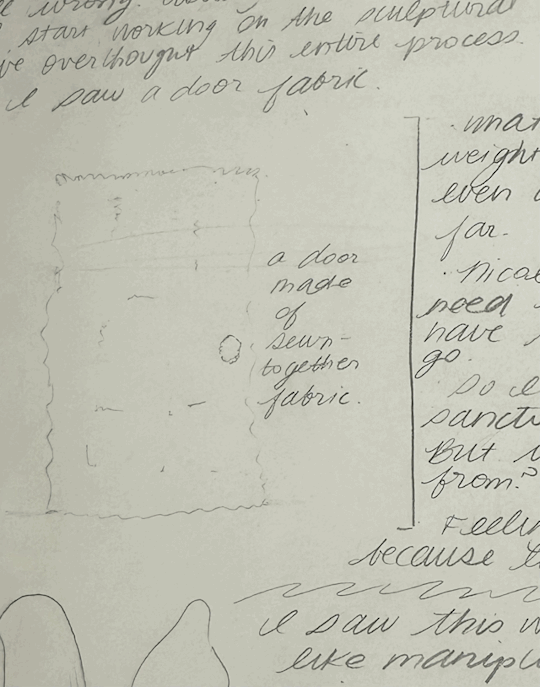








Contradictory Structures: Research Concept Boards 1,2, and 3
1 note
·
View note
Text

QCQ #3: Gravity of Levity
Quote: “Humour is ‘practically enacted theory’ in that it ‘invites us to become philosophical spectators upon our own lives.’”
Comment: Personally, I struggle with welcoming humor into artistic projects. Not because I have conflict with the humor itself, but rather I question how viable and constructive the presence of humor is if it compromises the quality and execution of the project. The author communicates that humor is not mindless entertainment but a conceptual strategy that shifts perspective. It requires viewers to pause and reevaluate what they perceive as normal. So perhaps, as one releases the visual parameters to fulfill, then the "success" of the piece is based mostly on whether the viewer receives the humor. By treating humor as a mode of inquiry, conceptual artists create space for uncomfortable questions, contradictions, and even failures—moments that become important to critical thinking and creating discussion about philosophies and ideologies between people.
Question:
On the topic of whether art can be humorous and deeply critical at the same time, how do you think the use of humor in conceptual art impacts our ability to take the artwork and its message seriously?
1 note
·
View note
Text
LIMITS: MIDTERM INDEX
1. Manifesto Room: Research Board #1 / #2 / #3
2. Manifesto Room: Final Installation / Video
3. Artist Presentation: Research
4. Manifesto Room: Collective/Subjective
5. Manifesto Public: Research Board #1 / #2 / #3
6. Manifesto Public: Final
7. QCQ #1: One Place After Another
8. Museum Visit
9.QCQ #2: Das Sockelproblem
10. Kitchen Pedestal Sink Manifesto: Research Boards 1,2, and 3
11. Kitchen Pedestal Sink Manifesto: Final
12. Radical Theory and Practice - Self-Directed Practice: Final
1 note
·
View note
Text
Karmic Cradle March 2025


Radical Theory and Practice - Self-Directed Practice Final
Karmic Cradle March 2025 fabrics dampened in clay, chickenwire, metal rebar, plaster, pearled-sewing pins, and rope 35 x 13 x 44 in.
The shell, to me, is a power center—where life enters and exits, carrying karma, fate, and destiny. Like light and dark, life and death are inseparable. Suspended from a tree like a child’s swing, the shell evokes both the innocence of beginnings and the weight of endings, with the rope subtly alluding to death by hanging. The materials that include fabrics dipped in clay reinforce impermanence, emphasizing the fragility of existence. Removed from water, the shell exists in a liminal state, caught between past and future, presence and absence, inviting the viewer to witness the delicate balance between life’s opposing forces.
2 notes
·
View notes
Text
Control March 2025
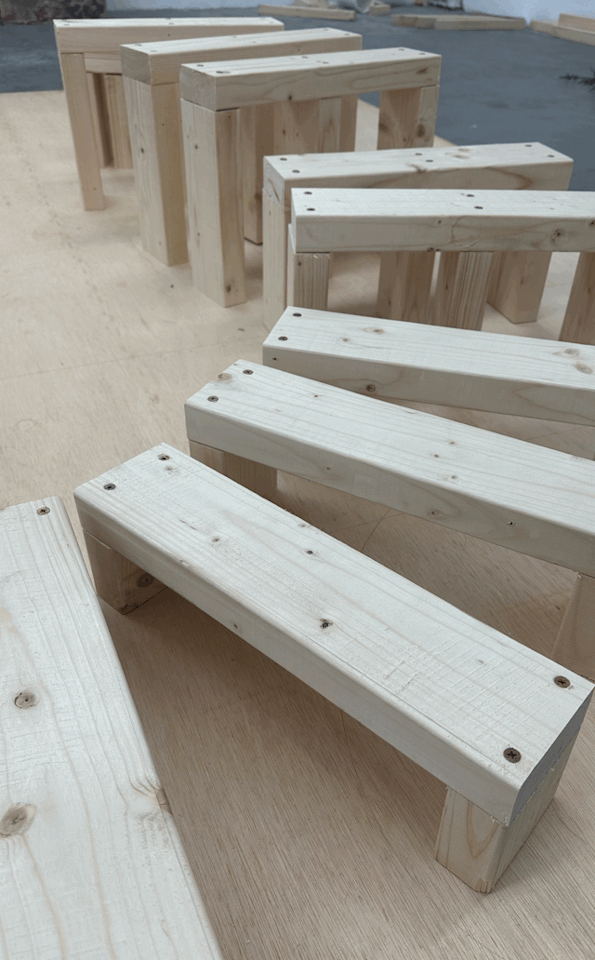

Kitchen Pedestal Sink Manifesto Final
Control March 2025 Wood, screws, and the human body 36 x 96 x 12 in.
In questioning the role of the pedestal, I chose the human body as a ready-made object. Traditional pedestals can create a sense of elitism, acting as a crutch rather than an integral part of the work. This piece challenges that notion by inviting the audience to engage physically, ascending and passing through the pedestal rather than merely observing from below. The act of witnessing and participation becomes central, shifting control to the viewer. Their choice—whether to engage or remain passive, determines the presence and impact of the work, making the pedestal an extension of the experience itself.
3 notes
·
View notes
Text



Radical Theory and Practice: Self-Directed Practice Concept Boards 1-3
1 note
·
View note
Text



Kitchen Pedestal Sink Manifesto: Assemblage Concept Boards 1-3
1 note
·
View note
Text






Gallery Visit to ICA - February 15, 2025 During my visit, one of the artists that caught my attention was Marguerite Humeau's installation exhibit "*\*sk\*/ey-*." It involved various sculptures as well as a video (26 minutes). Humeau utilized materials such as glass, wax, fibers, resin, and wood. Humeau's work exemplified dissecting what is around us to the tiniest detail, to notice the smallest thing that our own world begins to feel alien-like. I went to the ICA with the intention and hope to see how artists utilize wood that could convince me to try experimenting with the material myself. It was interesting to see how the artist made wood become fluid, melting down like liquid, twisting like wet clay.
1 note
·
View note
Text
QCQ #2: Where Does a Sculpture Start and Where Does It End?
Link to article
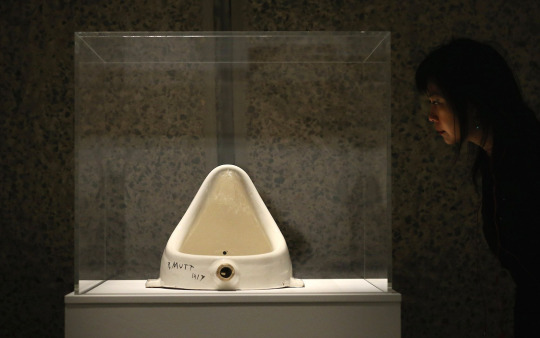
Quote: "As a physical support structure, the pedestal has acquired the implicit ability to illustrate the symbolic basis of an object. Accordingly pedestals have often served as media that established historical references, suggested genealogies or traditional affiliations and articulated hierarchies."
Comment: The role of pedestals in art is complex, especially when considering how they create hierarchies within a gallery setting. Just because a piece is elevated on a pedestal, it is often perceived as more important or prestigious—but does that height truly validate its significance? In some cases, this reliance on a pedestal can become a crutch, artificially enhancing the presence of a work rather than allowing it to stand on its own merit. While pedestals can serve historical or contextual purposes, if history is not integral to the work, then the piece should be able to command attention without the base. If a pedestal is used, it should be considered an intentional part of the artwork rather than just a supporting structure. This challenges both artists and viewers to question whether the impact of a piece is dependent on its presentation or if it holds power independent of its display.
Question: Given that at a certain point in history, art was really only intended for the rich and educated, how do pedestals function within the hierarchy of art display—are they merely a remnant of Eurocentric traditions that reinforce exclusivity or can they serve as a tool for artistic evolution and re-contextualization?
1 note
·
View note
Text
Tehching Hsieh - Performance Artist
***Presentation Link***
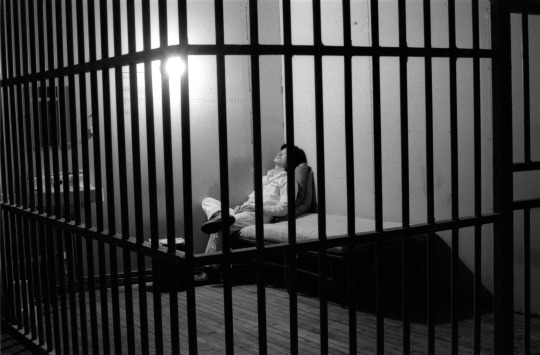
The Cage Piece, 1978-79 Performance

The Rope Piece, 1983-84 Performance

The Time Clock Piece, 1980-81 Performance
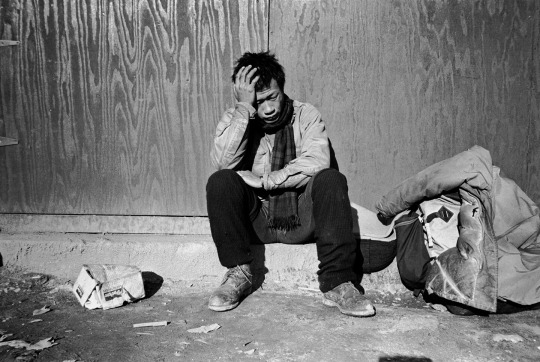
One Year Performance, 1981-82 Performance

One Year Performance, 1985-86 Performance
3 notes
·
View notes
Text




Swinging from the Backseat, February 2025 Sculpture Metal rebar, nylon canvas punching bag
This sculpture is based on a childhood memory of feeling trapped in the backseat of a car. Though the front seat was right there, it felt impossibly distant—like a hallway stretching endlessly, leaving me powerless and disconnected from control. Using welded metal and torn nylon canvas from an old punching bag, I reconstructed that feeling of separation and tension. The split car, tethered together, represents both the fragile connection, the unreachable distance, and the division between past and present, control and helplessness. Along with placing this sculpture at a neglected field behind the houses of my neighborhood, it reflects how space and perception can distort, turning something familiar into something unsettling and unreachable.
2 notes
·
View notes
Text


Eradicate (Continued) January 2025
Eradicate is about rawness, transparency, expression, and mercilessness. Art is one’s undoing. To make art is to undo everything, including oneself. It is to crack, rip open everything that is within and around you, liberating oneself from all that was or is, to unbind oneself from all restraints by whatever means necessary. For the artist, detaching from history is crucial in order to create something new. I have my history to let go of, hence the object chosen to destroy; it is to eradicate what once attempted to eradicate me. And for art to be raw, it is to deprioritize aesthetics. The release and surrender of control to all possible variables and conditions is more essential for this piece and for the artist who lives rigidly and is prone to being contrived. This manifesto can be viewed as an act of liberation and an act of service for the artist.
1 note
·
View note